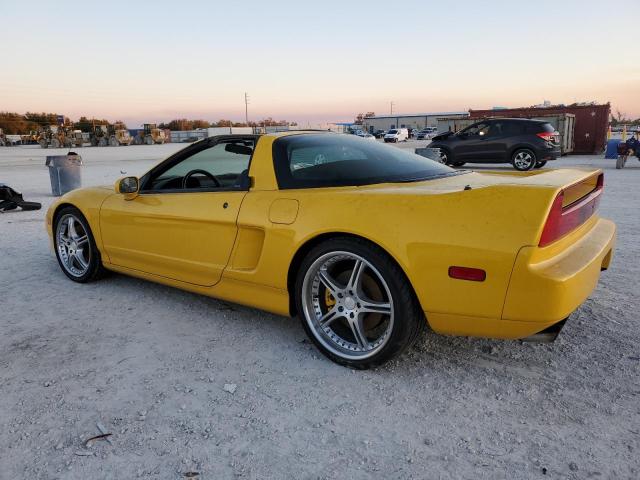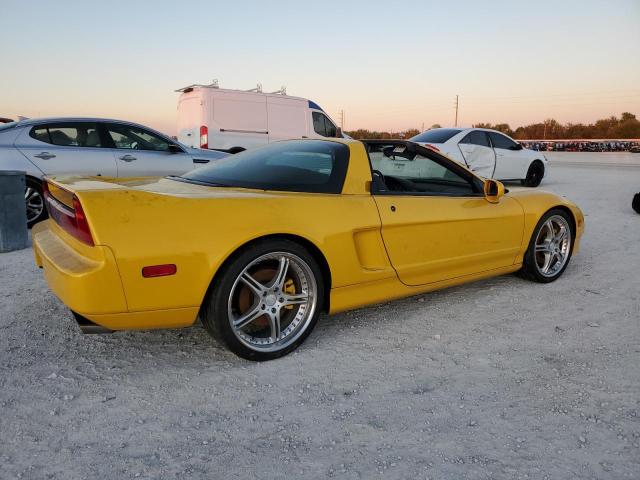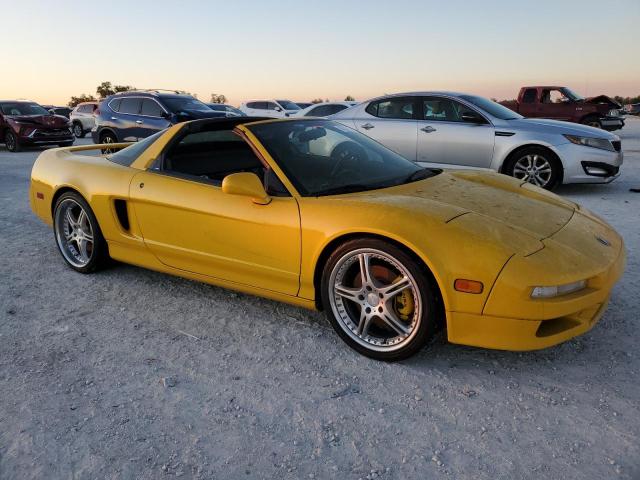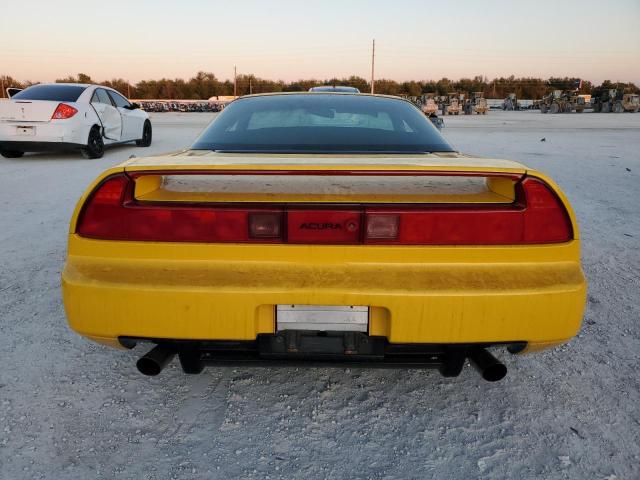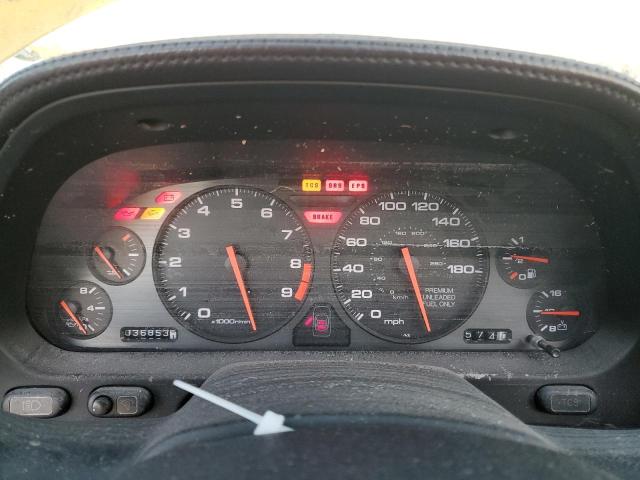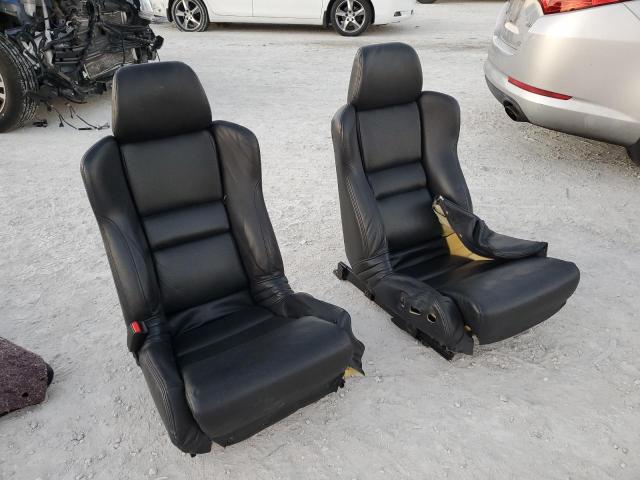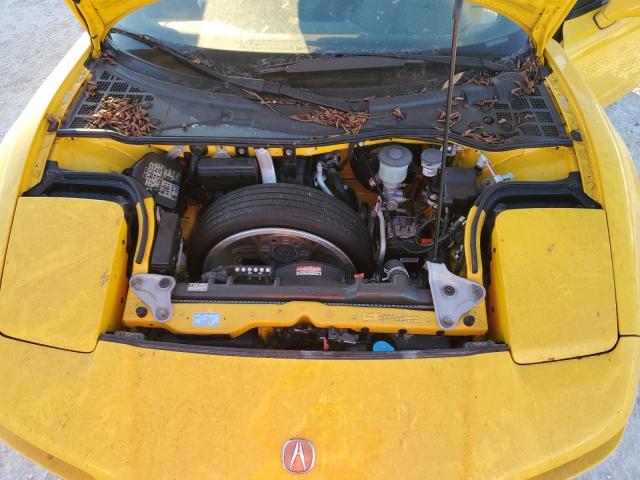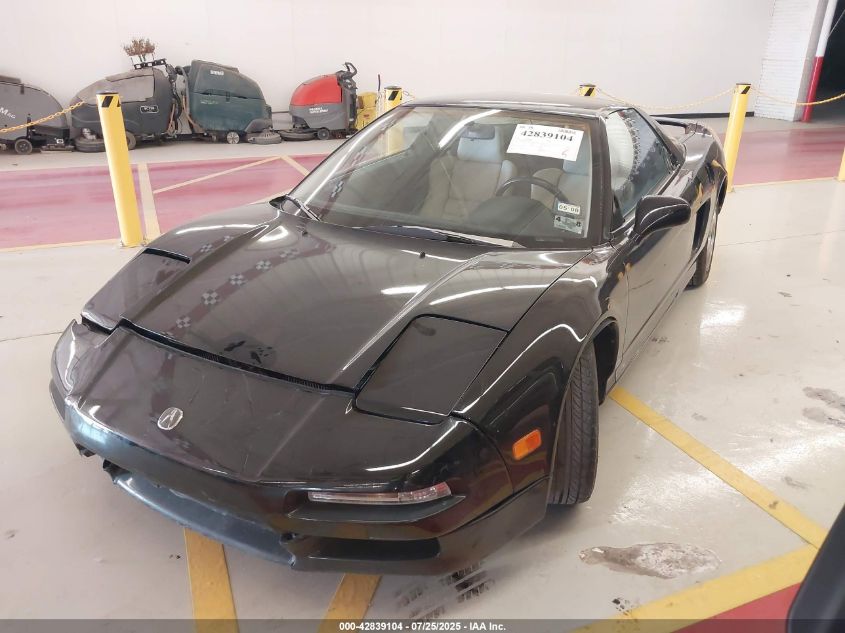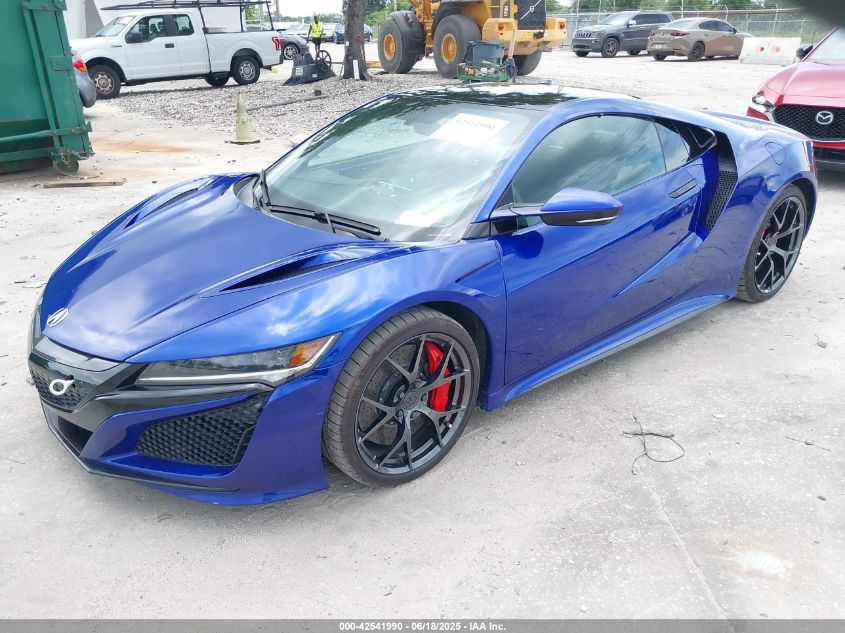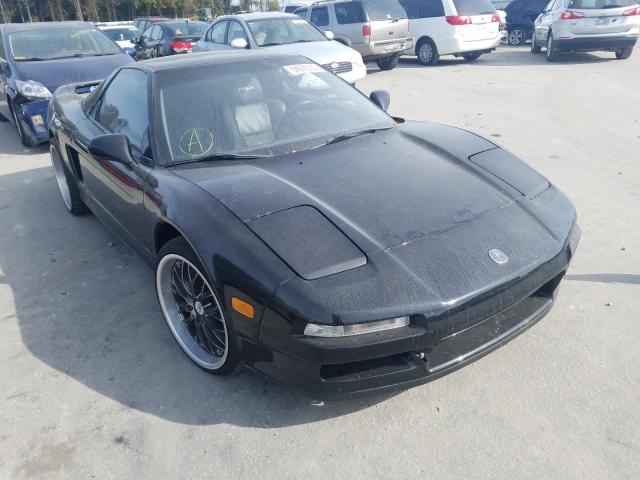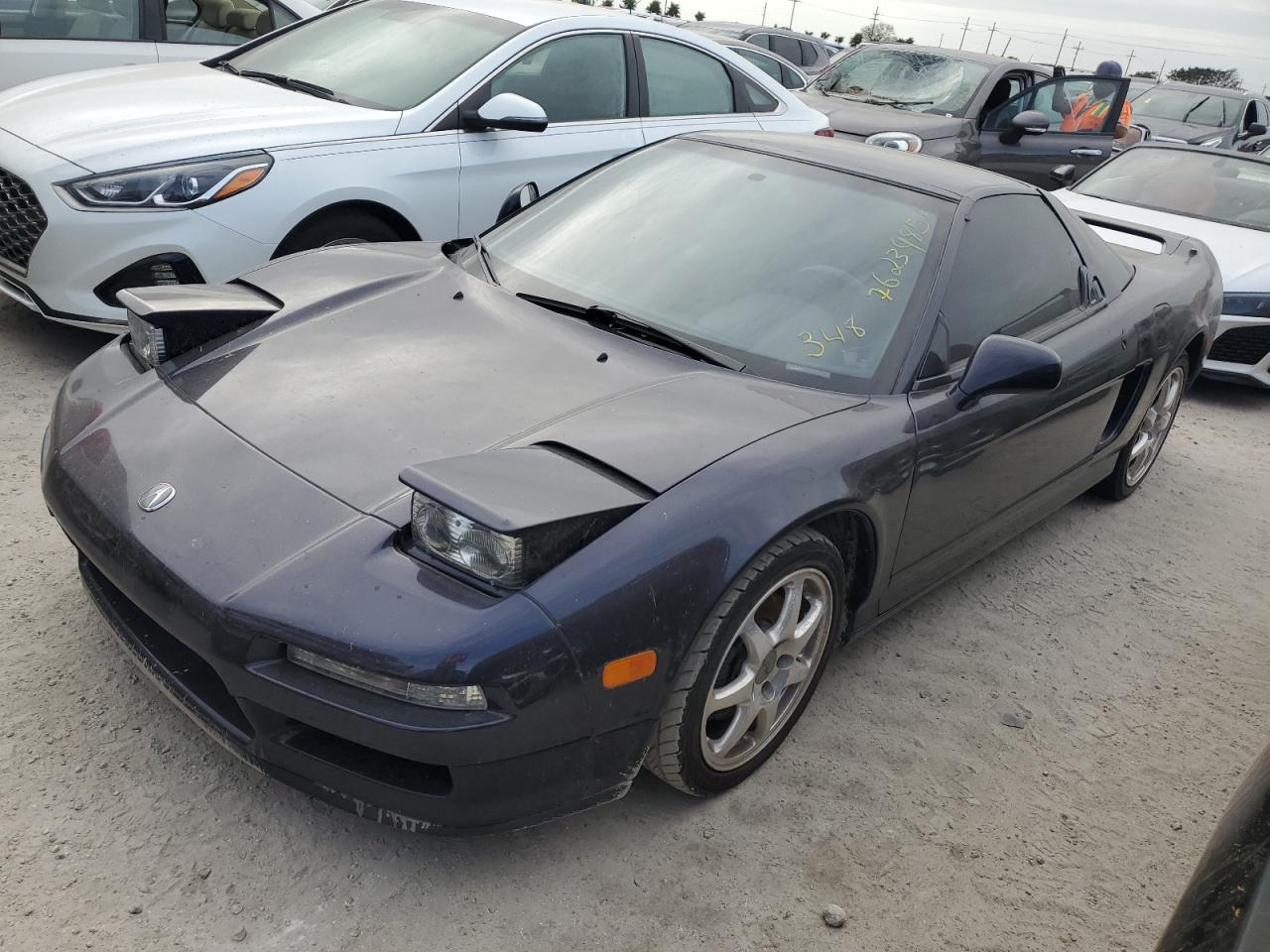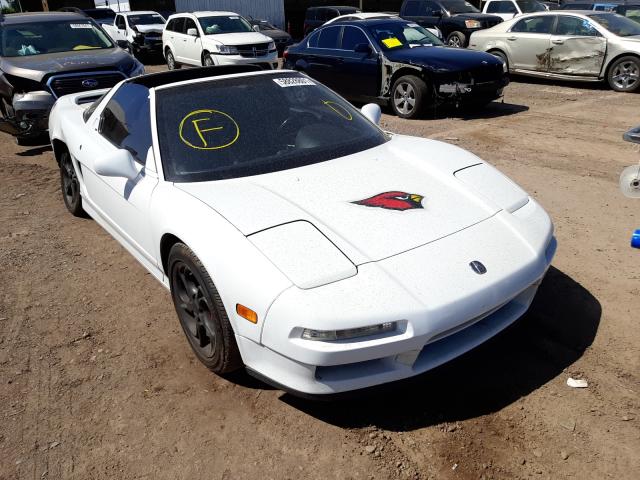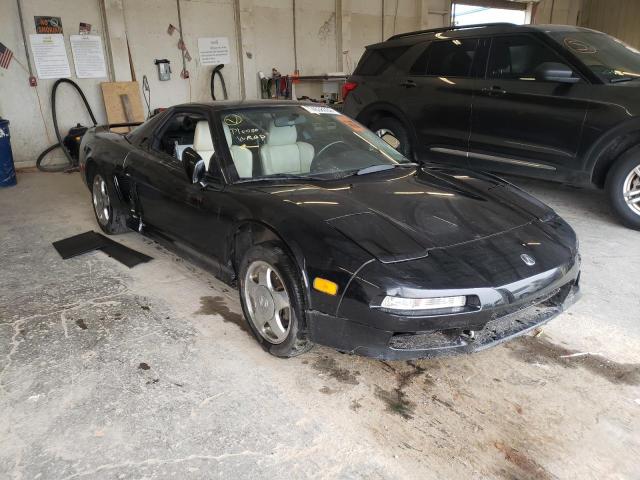2000 ACURA NSX | JH4NA2163YT000195
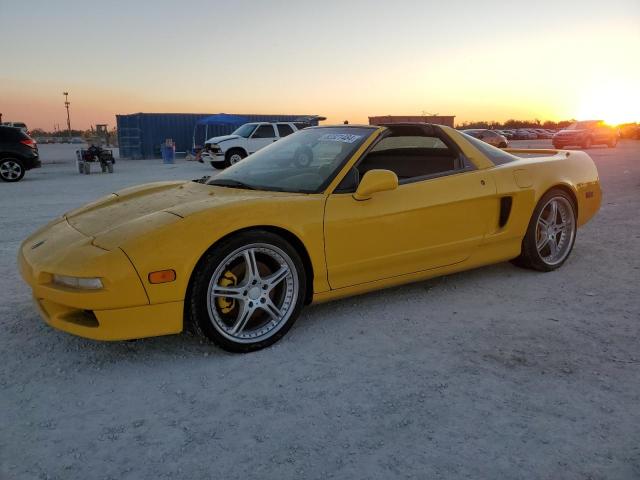 ❯
❯2000 ACURA NSX | JH4NA2163YT000195
 United States
United StatesLot details
- Sale Date2024-12-03
- Lot Number82321484
- ACV1000 $
- Sale documentFL - CERT OF TITLE-SLVG REBLD FLOOD
- LocationFL - PUNTA GORDA SOUTH
- Odometer36,853 miles (59,309 km)
- Primary DamageWATER/FLOOD
Vehicle specifications
2
~$90,000
Engine: 3.2L naturally aspirated V6
Torque: 304 Nm
0–100 km/h: ~4.8 s
The original Acura NSX (Honda NSX globally) was a revolution in sports car engineering, offering Ferrari-like dynamics with Japanese reliability and daily usability. In its ultimate NA2 form (1997–2005), the NSX featured a 3.2L V6 producing 290 hp and 304 Nm of torque, paired to a 6-speed manual transmission and rear-wheel drive. It could accelerate from 0–100 km/h in ~4.8 seconds, with a top speed near 280 km/h (174 mph).
What truly defined the NSX was its mid-engine layout, aluminum monocoque chassis (the first in production), and race-bred engineering. Developed with input from Ayrton Senna, the car had perfectly neutral handling, superb pedal feel, and surgical steering precision. Its lightweight construction (just ~1,350 kg in later trims), ultra-low seating position, and wide stance delivered superb balance, rotation, and high-speed stability. With double-wishbone suspension all around, titanium connecting rods, and an 8,000+ rpm redline, the NSX offered F1-inspired dynamics with the manners of a grand tourer.
Final Bid Acura NSX (2000)
$43,750
$43,750
$43,750
Body Styles
The NSX was offered exclusively as a 2-door, 2-seat mid-engine coupe, with a Targa-top version introduced in 1995. The design featured a cab-forward cockpit, long rear deck, pop-up headlights (1990–2001), low-slung proportions, and a rear spoiler integrated into the tailgate. The full aluminum bodywork was shaped in a wind tunnel and emphasized clean aerodynamics, visual lightness, and exotic symmetry.
The post-2002 facelift introduced fixed HID headlights, updated bumpers, side skirts, and wheels, giving the NSX a more modern appearance while preserving its unmistakable silhouette. Every angle of the car emphasized precision and airflow, from the front splitter to the integrated side air intakes feeding the transverse V6.
Model Name Meaning (Manufacturer)
The name NSX was created by Honda as a symbol of innovation and ambition — a bold departure from traditional naming and a statement of technological intent. Officially, NSX stands for “New Sports eXperimental”, reflecting the car’s role as a groundbreaking concept brought to life, not just for Acura, but for the entire sports car world.
Developed under Honda’s newly formed luxury brand Acura for the North American market, the NSX was envisioned as a next-generation mid-engine sports car that could rival Ferrari and Porsche while offering Honda-like reliability and usability. The "New" emphasized a clean-slate design approach; "Sports" captured its performance orientation; and "eXperimental" highlighted its use of aerospace-derived engineering, including the world’s first all-aluminum production monocoque, and innovations like VTEC variable valve timing.
The name NSX wasn’t just a badge — it was a declaration. Honda intended the NSX to redefine what a supercar could be: precise, reliable, and livable without compromising soul or speed. Its development involved input from Ayrton Senna, and its engineering breakthroughs cemented the NSX as a landmark car — and the name as a lasting symbol of that revolution.
Model Name Meaning (Languages)
“NSX” has become a symbol in automotive culture, recognized globally as shorthand for balance, precision, and accessible supercar performance. The name remains legendary among enthusiasts and engineers alike, standing for a time when Honda dared to challenge Ferrari — and won in the real world.
Body & Interior Colors and Rims
The first-generation Acura NSX presented a visual identity that was equal parts precision-crafted performance and refined Japanese restraint, and nowhere was this balance more evident than in its color palette, interior themes, and wheel selections. Each element was selected to showcase the car’s mid-engine layout, aluminum construction, and timeless supercar silhouette.
Exterior colors ranged from understated metallics to vivid signature hues, reflecting the NSX’s dual role as an everyday exotic and a performance icon. Early models featured classic finishes such as Formula Red, Berlina Black, Grand Prix White, and Sebring Silver Metallic. As the model evolved, additional tones like Imola Orange Pearl, Long Beach Blue Pearl, Monaco Blue, and the rare Midnight Pearl added exclusivity and depth. Pearl and metallic finishes were often paired with clearcoat layers that enhanced the NSX’s sculpted side intakes, wide rear haunches, and long, tapered nose. The Imola Orange and Long Beach Blue variants became particularly iconic among collectors, especially when paired with manual gearboxes and matching interiors.
The cabin of the NSX was designed to feel like a precision instrument — a cockpit more than a lounge, with everything angled toward the driver and visibility prioritized above all else. Interior color themes were tightly curated: Black, Ivory, and Tan leather dominated early years, with later models offering Camel, Red, and Blue leather options in limited-production configurations. The leather upholstery was hand-fitted, with firm bolstering designed to hold the driver without excess bulk. Dashboards and center stacks were trimmed in soft-touch black vinyl or leather, depending on trim, with minimal distractions — an analog tachometer, simple HVAC controls, and a Honda/Acura-sourced sound system defined the user experience.
Special editions like the NSX Zanardi (U.S.) and Type-S / Type-R (Japan) featured lighter, Alcantara-trimmed interiors with deletion of amenities, fixed-back Recaro seats, and Titanium shift knobs, reinforcing the NSX’s racing pedigree. In contrast, later models like the 2002–2005 facelift introduced color-matched seat piping, upgraded stitching, and improved insulation, without compromising the focused, minimalist layout.
Wheels evolved subtly over the NSX’s lifespan but were always engineered for lightness and airflow, matching the car’s obsession with balance. Early models rode on 15-inch front and 16-inch rear forged alloys, typically finished in Silver, Gunmetal, or Machined Aluminum, with a signature five-spoke star design. By the mid-1990s, wheel sizes increased to 16-inch front and 17-inch rear, enhancing stance and grip without altering ride quality. The final facelifted models (2002–2005) received multi-spoke forged BBS-style wheels, finished in Silver or Charcoal Grey, with a more modern, motorsport-inspired look.
NSX-R and Zanardi models received ultralight forged Enkei wheels in white or dark graphite finishes, paired with Yokohama Advan or Bridgestone Potenza tires and upgraded suspension tuning, visually distinguishing them from road-focused trims. Brake calipers were modest in size by modern standards, finished in Silver or Black, but paired with ventilated rotors and aluminum hubs to reduce unsprung weight.
Whether finished in searing orange or minimalist white, riding on lightweight forged alloys or motorsport-inspired split spokes, the NSX wore its hardware and hues with engineered elegance — never flamboyant, always intentional, and forever distinctive.
Top Expensive Options
- NSX Type S Lightweight Package (JDM only): ~¥1.3M ($12,000)
- Removable Targa Roof with Reinforced Structure: $5,000
- Bose Acoustic Wave Premium Audio System: $1,200
- Alcantara and Leather Sport Seats (Zanardi & Type S): Standard
- Lightweight Forged BBS Wheels (Type S, Zanardi): $2,000
- Rear Strut Tower Bar and Reinforced Chassis Braces: Standard (Type S)
- Manual Steering Rack (lighter and preferred by purists): Standard (Zanardi/Type S)
- Factory Car Cover and Titanium Shift Knob: $400
- Integrated Navigation and Alpine CD Head Unit (Final Years): $1,100
- Exclusive Colors (Imola Orange, Long Beach Blue Pearl): Limited
vs Competitors
The NSX competed with the Ferrari 348/355, Porsche 911 (964/993), Dodge Viper, Lotus Esprit, and Corvette C5. While others offered more raw power or badge prestige, the NSX was lighter, more intuitive, and vastly more reliable. It outclassed the Ferrari 348 in both performance and durability, and offered superior ergonomics and comfort compared to the 911. Against the Viper, it delivered finesse over brute force. Its suspension and balance were benchmarked for years by other automakers, and it remains one of the best-handling street cars ever made, with a timeless formula.
Fun Fact
The original NSX was the first production car with an all-aluminum monocoque, reducing weight by over 200 kg versus a steel body. Ayrton Senna, then McLaren-Honda F1 driver, played a direct role in chassis development — famously calling the prototype "too soft" and prompting a major suspension retune. The NSX was also the first exotic car to be designed with reliability and comfort in mind, offering air conditioning, traction control, a useable trunk, and Honda-level servicing — changing the supercar landscape forever. It is now considered one of the most influential performance cars of the 1990s and a future-proof collector's icon.


